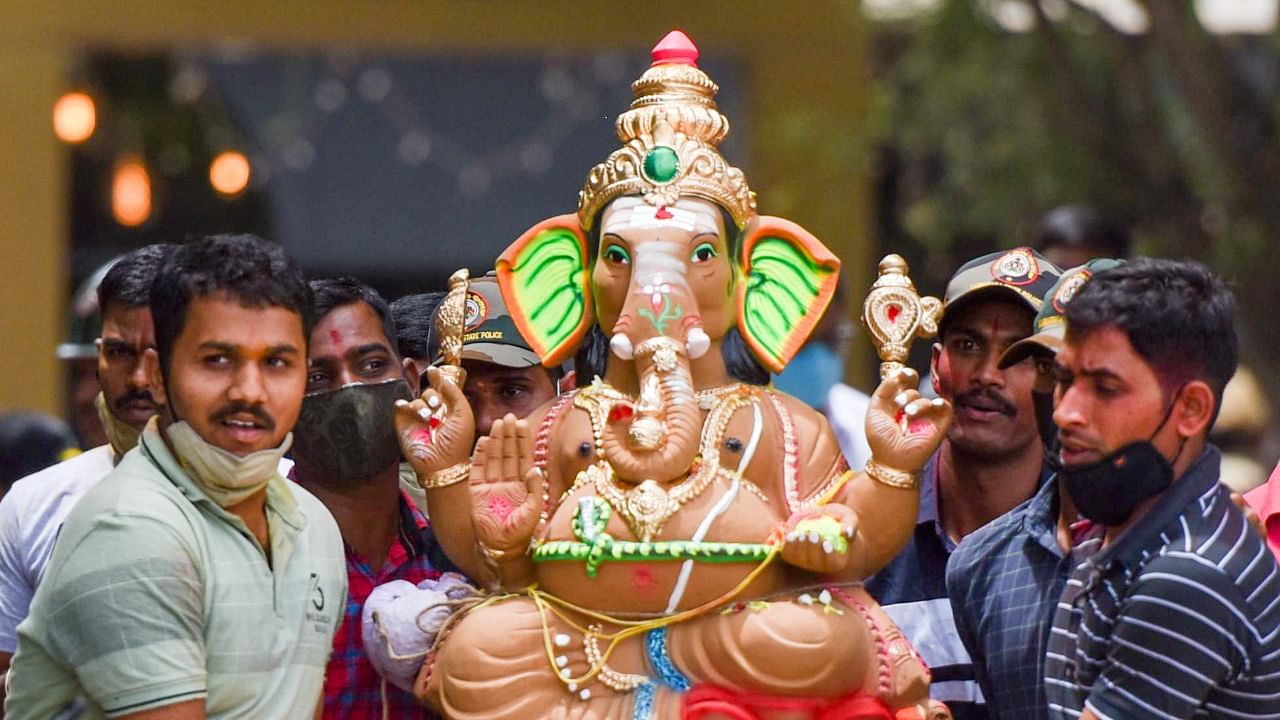
There’s no dispute that Ganesha is the most worshipped Hindu deity. Whether one is a Shaivite or Vaishnavite, Jain or Buddhist, Ganesha appeals to all. And aside from idols, the ‘Elephant God’ is now also artistically depicted on lamps, calendars and pendants, and he adorns T-shirts, keychains, candle-holders, coffee mugs, etc. Drawings and sketches of him in new forms and designs show an explosion of human creative imagination. His birthday – Ganesh Chaturthi – is also the most widely celebrated of our festivals.
But is Ganesha’s popularity only in India? Is it only amongst Indians in India and those outside India in countries such as Singapore, Malaysia, the US and UK, Germany, Australia, etc., where there are large Indian populations?
Sculptures of Ganesha have been found across the world, from Asia to the Americas, though in some places, his depictions differ from what Indians in India are used to seeing.
In Thailand, he’s worshipped as Phra Phikanet, a deity of fortune and the remover of obstacles. The logo of the Department of Fine Arts, Thailand, is Lord Ganesha. Thailand also boasts of having the largest standing bronze idol of Ganesha.
In Cambodia, he is known as Prah Kenes. Prior to the Khmer period, i.e., before the ninth century, Ganesha was flat-bellied, standing, and without the snake and mouse, but later, during the 12th century, the idol was seated, with the big belly and a snake around the neck.
Even in Tibetan Buddhism, he’s represented as the “deity of wealth”, but he also is represented in Tantric Form as the fierce and red Maha Rakhta. The tantric form is also found in Indonesia, where Ganesha can be seen adorned with skull ornaments, right from the headdress to the pedestal.
Indonesia, though a Muslim-majority country, reveres Ganesha. In Indonesian culture, Ganesha was born with the elephant head. In 1998, the country issued a 20,000-Rupiah currency note with an emblem of Ganesha. Perhaps the only currency in circulation in the modern era that carries an emblem of a god.
Several South and South-East Asian countries had trade links with India. Hence, Ganesha also become a traveller along with the peoples of these countries.
Mongolia, China and Japan also embraced Ganesha once, but today he flourishes only in Japan. In Mongolia, he was called Totkhar-our Khaghan, and in China he was Kuan-shi t’ienor Ho Tei, the large-bellied ‘God of Happiness’.
In Japan, he’s known as Kangi-ten, Vinayaka-ten, Binayaka-ten, Ganapatei, etc. Kangi-ten is often represented as an elephant-headed male and female pair. The Japanese even today worship Ganesha and Ganesha Chathurthi is celebrated with much fervour and devotion, just like in India.
One can understand Ganesha’s popularity in South and South-East Asia, China, Japan and even Persia. He was popular throughout Central Asia, in Iran and Syria, and in Afghanistan, wherefrom Gandhari, the wife of Kaurava king Dhritrashtra, came. The foray of Islam in Afghanistan is only 1300 years old. It was only around the 10th century that the Hindu Shahi kings who ruled Afghanistan were defeated by Mahmud Ghazni and the Islamic empire started. Most of the temples and monasteries in the Hindu-ruled land were destroyed. Only some remnants remain today. Even to this day, Ganesha idols belonging to 4-5th century are currently housed and guarded at Dargah Pir Ratan Nath Ji Mandir, Kabul. With the current situation in Afghanistan, will the people preserve him or will he preserve the people?
But how did Ganesha reach the Americas? How, indeed, did Indians? Had Indians explored the Americas thousands of years ago? Have we wrongly credited Christopher Columbus with having discovered America?
The Mayan civilization, which comprised south-eastern Mexico, all of Guatemala and Belize, and the western portions of Honduras and El Salvador, started around 2600 BC and collapsed around 900 AD, has many references to Hindu culture and Hindu gods. Mexico’s famed Mayan archaeological site Chichen Itza has similarities to Indian temples. For one, Chichen Itza has 1,000 columns -- just like the 1,000 pillars in the temples of Rameshwaram, Madurai, Srirangam, Chidambaram, Warangal, etc. Similarly, alien figurines have also been found in ancient Indian temples. Did Indians have contacts with the Mayan civilization?
According to Mayan legend, the ‘Pyramid of the Magician’, as it’s now called, at Uxmal, Yucatan Peninsula, Mexico, was built by the magician god Itzamna in one night. Sounds familiar? The ‘Palace of Maya’, built by the Pandavas at Indraprastha, was built by Mayasura in one night. Statutes of Ganesha, Shiva, Hanuman are said to have been excavated at Uxmal, Campeche, Gautemala, Honduras, Peru and El Salvador, areas that encompassed the Mayan civilisation.
What is it about the elephant-headed, pot-bellied, snake-for-a-belt, mouse-riding Hindu god that has endeared him to so many cultures around the world?